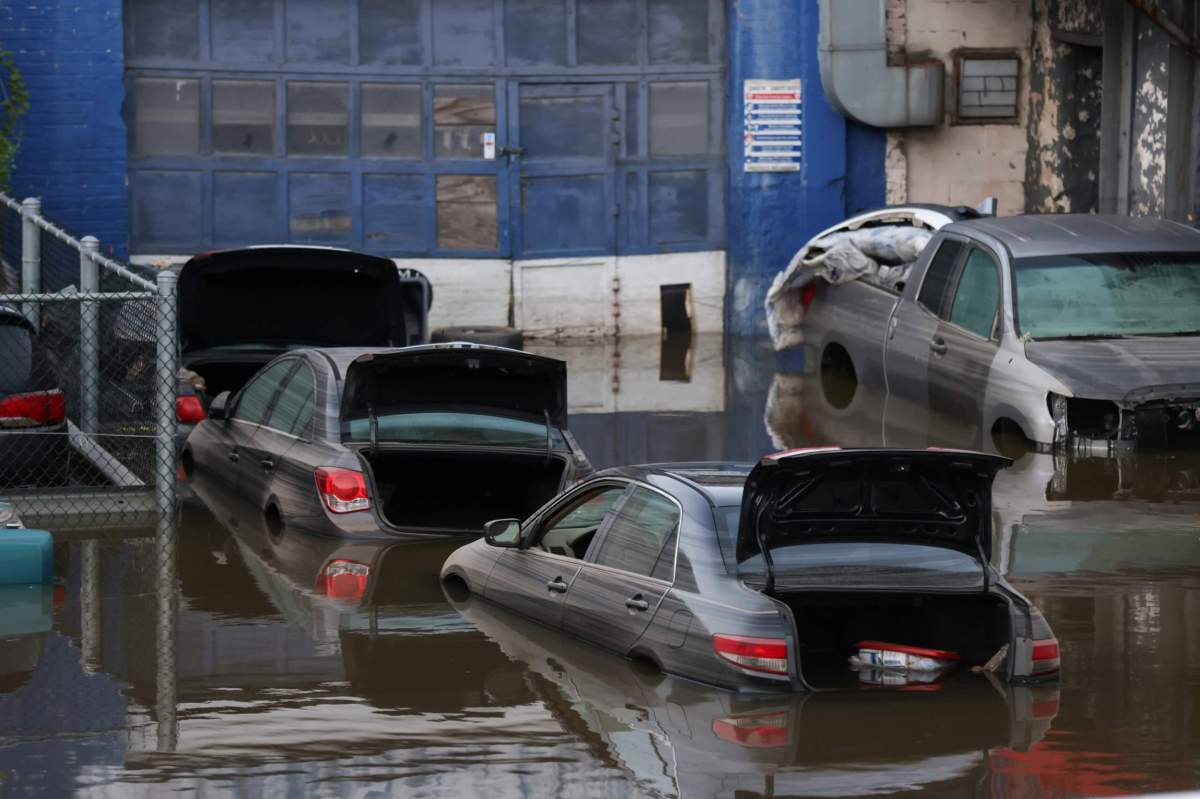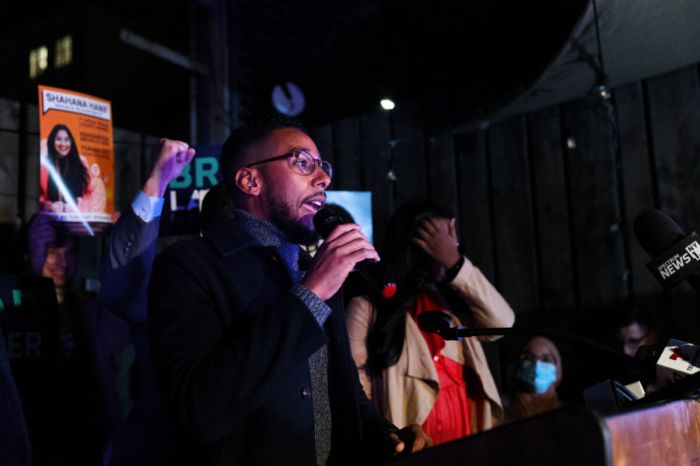This infrastructure has really gone down the drain.
The quality of New York City’s sewer system was up to local politicians up until about half a century ago, and their decisions contributed to parts of the city flooding worse during rainstorms, according to city officials.
Borough presidents were in charge of regulating how much water their sewers could handle until the mid-1970s, when the city began standardizing the underground infrastructure, said leaders of the Department of Environmental Protection, which manages the vast pipe network.
The city’s ancient tubes can only handle up to 1.75 inches of rain an hour, and they were completely overwhelmed last summer when the double whammy of hurricanes Henri and Ida dumped record-smashing 1.94 inches and 3.75 inches on the Big Apple.
The city’s unequal sewer design dating back decades contributed to even worse flooding during the heavy storms in boroughs like the Bronx and Queens, said DEP Commissioner Rit Aggarwala during a Tuesday City Council oversight hearing on storm resiliency.
“Prior to the 1970s… sewer standards were set by each borough president, which is one reason that, unfortunately, some parts of the city — especially Queens — have many sewers that are designed for only 1.5 inches of rain,” Aggarwala said.
Ida killed 13 New Yorkers, including 11 who died in flooded basements, most of them in Queens.
A Bronx sinkhole that swallowed a van last month happened because a local sewer pipe had a quirky design picked by the local borough president more than a century ago, and the tube was unable to handle the increasingly frequent extreme weather caused by climate change.
The sewer beneath the collapsed roadway on Radcliffe Avenue in Morris Park dates to 1916, according to DEP, when the then borough president embraced a new construction technology called “interlocking vitrified block.”
“[Unlike] traditional type of sewers that come in big sections that weigh several tons, these are just like sort of Lego pieces that went together,” said the agency’s chief operating officer Vincent Sapienza. “Lasted for a hundred years, so I guess there was some value to it.”
Due to pressure building up from repeated heavy rainfall over the past years on the 106-year-old pipe, its roof cracked and soil started washing through until the ground caved in on July 18.
“The sewer had done its job well for more than a hundred years, but in retrospect, it seems likely that this particular design begins to get weakened when it is pressurized and when water reaches the top of the sewer,” Aggarwala said.
DEP has not found any more of these Lego-style, Woodrow Wilson-era sewers in the borough so far, according to Sapienza.
The agency is looking at upping its sewer capacity from 1.75 inches per hour, but they can only install pipes so big before the city would have to tear down buildings to make way for the larger infrastructure.
“That would have some catastrophic impacts, including we would need trunk sewers so wide that in many places we’d be tearing down buildings to make the road wide enough to accommodate that level of sewer,” Aggarwala said.
“It would be wrong for anyone to think that the sewer system can or should be designed for a 4-inch storm,” he added.




































